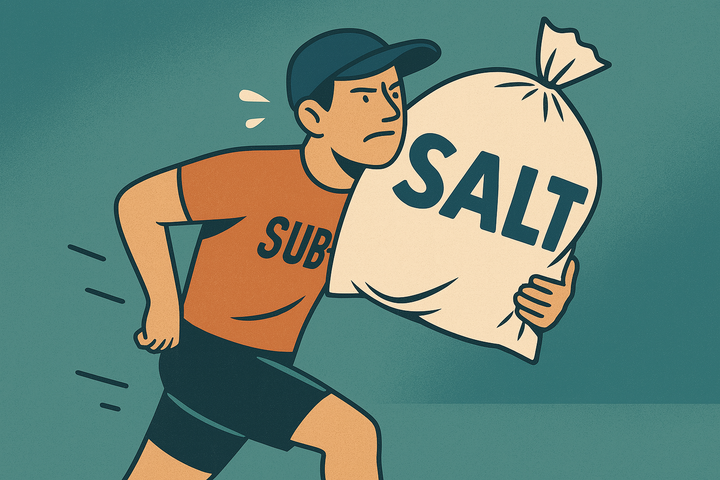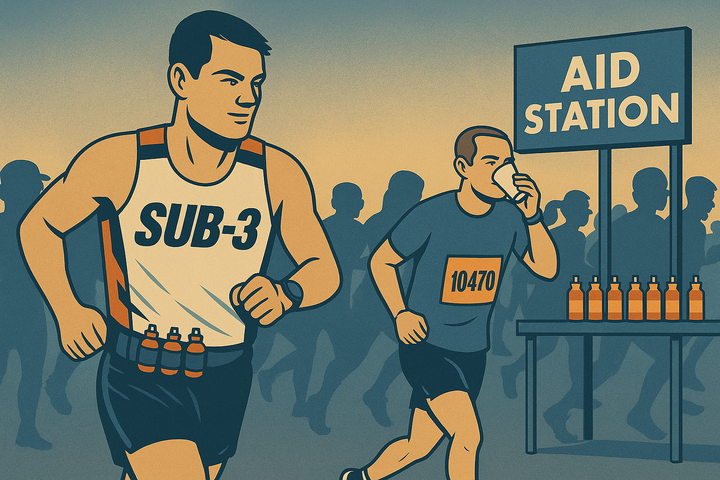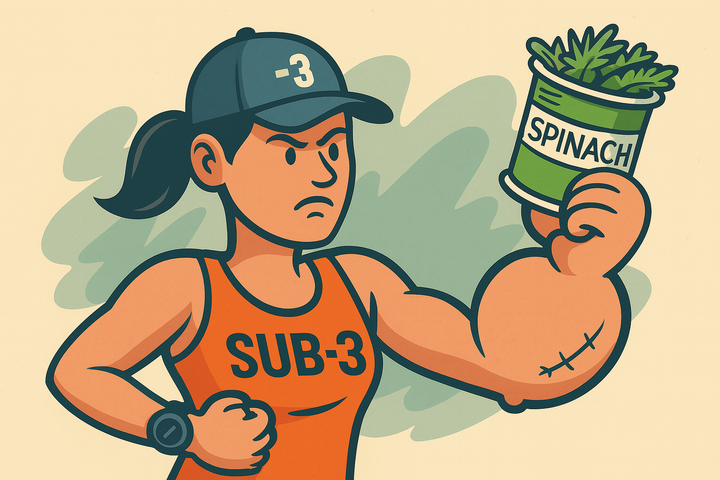How should I carb load before a sub-3 effort?
Why carb loading doesn’t mean stuffing your face – and how sub-3 runners get it right.

If you’re gunning for a sub-3 marathon, carb loading matters – but not in the way most people think. Done right, it’s a precision tool. Done wrong, it leaves you bloated, sluggish and wondering why your legs feel like lead at mile two.
I learnt this the hard way. Before Chester Marathon, I indulged in a full pizza, followed by jelly babies and a cascade of sports drinks. The next morning I stood on the start line feeling full, not fuelled – heavy with water retention and a churning stomach. I got through the race, but not in the way I’d hoped.
The idea behind carb loading is simple: glycogen – the stored form of carbohydrate in your muscles and liver – is your primary fuel for marathon pace running. But there’s a ceiling. For most trained runners, glycogen stores max out at around 8–12g per kilo of bodyweight. For an 80kg runner, that’s 640–960g total. Anything beyond that won’t be stored – it’ll just sit in your gut or be flushed out, often taking water and comfort with it.
So what should you do instead?
- Start 36–48 hours before the race. You don’t need a full week of carb loading – two days is usually optimal.
- Target around 8–10g of carbs per kg of bodyweight per day during this window. That’s roughly 640–800g per day if you weigh 80kg – but spread throughout the day, not all at once.
- Focus on low-fibre, high-glycaemic index carbs like white rice, white bread, bagels, cereal, pretzels, and yes – a sensible amount of pizza if it suits you. But avoid foods that might cause bloating or GI distress.
- Drink to thirst – don’t force water, but be aware that each gram of glycogen binds with 3–4g of water. Some weight gain is normal – and a sign that it’s working.
- Keep fat and protein moderate – they’re harder to digest and slow gastric emptying.
The final piece is your race morning breakfast. After an overnight fast, liver glycogen can dip – so 2.5–3 hours before your start, aim to take on 1–1.5g of carbs per kilo. That could be two slices of white toast with honey, a banana and a sports drink.
And remember: carb loading doesn’t replace race-day fuelling. You should aim for around 60–90g of carbohydrate per hour once the gun goes, starting early in the race. This is what maintains your blood glucose and delays, or helps you avoid entirely, the dreaded wall.
The irony is that runners often overeat in the name of carb loading and underfuel when it matters most. So keep it smart, keep it simple – and, above all, keep your focus on performance, not pasta.
Enjoyed this article? Help keep Sub-3 running — support us with a coffee.
To help fund the running of the site, Sub-3 is an Amazon Associate and earns from qualifying purchases. We only recommend gear or kit that has genuinely helped in our own running and that we believe is worth considering.



